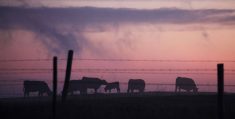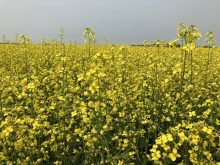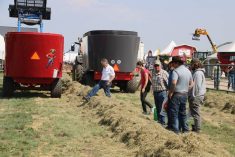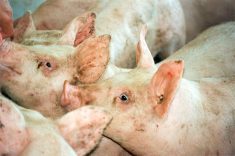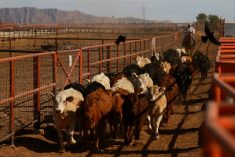GARLAND, Man. – Agriculture and forestry are generally perceived as two distinct industries.
However, a report from a 13-year-old research project in Manitoba’s Parkland region will soon conclude that the two industries can be mutually beneficial.
Forage and grazing experts with Manitoba Agriculture and Agriculture Canada have been working on what is called the Garland Project since 1997.
The purpose of the long-running project is to evaluate grazing systems that could benefit livestock producers and forestry companies.
“Timber harvesting and livestock grazing has always been seen as conflicting resource uses,” Manitoba Agriculture forage specialist Bill Gardiner said during last week’s Manitoba Grazing Tour.
Read Also
Man charged after assault at grain elevator
RCMP have charged a 51-year-old Weyburn man after an altercation at the Pioneer elevator at Corinne, Sask. July 22.
Louisiana Pacific operates a pulp mill in The Pas, Man., and harvests trees throughout the region. Approximately 20 percent of its cut comes from leased crown land that is designated for forestry.
However, the Manitoba government would prefer if several parties shared the resources from crown land.
“In this province, we try to (maintain) a multiple resource use principle in the designation and planning of crown land,” Gardiner said.
With that mandate, Gardiner and others initiated the grazing project on a parcel of bush near Garland, Man., 13 years ago.
The researchers divided the site into four 64 acre paddocks.
Aspen trees were harvested in the winter on two of the paddocks, with seven head of cattle on one paddock and 14 on the other.
The same number of animals grazed the other two sites, but the trees were harvested in summer.
“This whole half-section was 100 percent tree cover when we started,” Gardiner said.
The condition of the land in the early stages shocked Clayton Robins, an Agriculture Canada technician who participated in the research.
“We wrecked a lot of CV boots on the ATV driving around that first year
or two,” he said.
“There was a lot of slash and a lot of downfall.”
However, Robins was surprised how quickly the presence of cattle helped improve the forage quantity and quality, especially on the paddocks where trees were harvested in summer.
“It seemed like any areas where there was high disturbance and high traffic, we had a much quicker recovery of your grazable species.”
Loggers removed aspen that were five inches in diameter or larger.
“Or else they’re too small for their peeler to take the bark off of them,” Robins said.
Removing trees in summer allowed grass to develop quickly during the growing season, providing excellent grazing conditions for cattle almost immediately.
“There was a significant amount of very good grazable material and it was years and years in a row where we were likely understocked,” Robins said.
He said it took a few years for the forage grasses to develop in the winter- harvested paddocks, but eventually they came around. The final report and recommendations from the Garland project will be released later this year.





